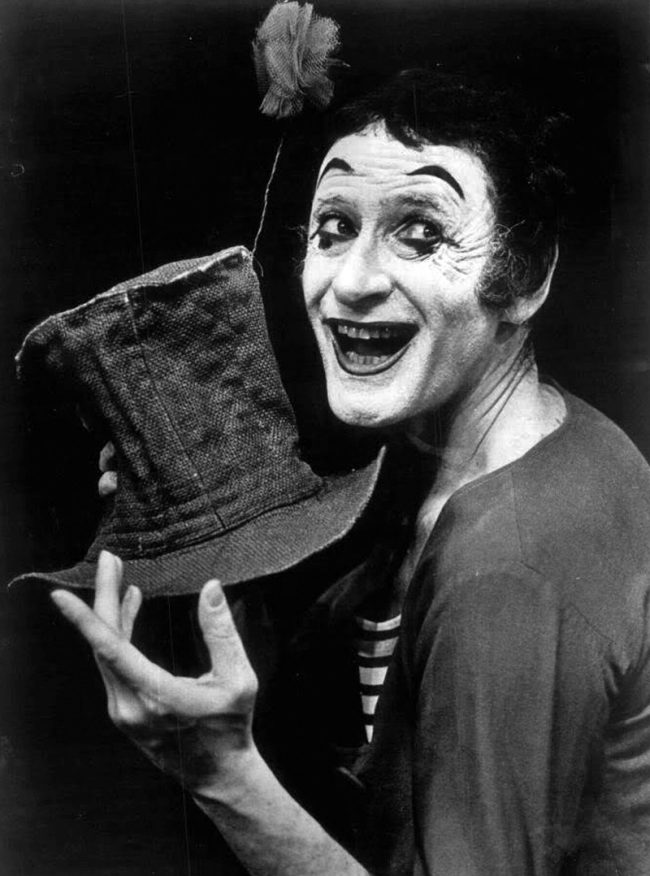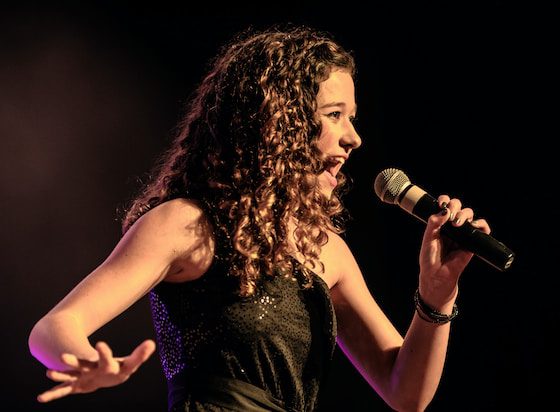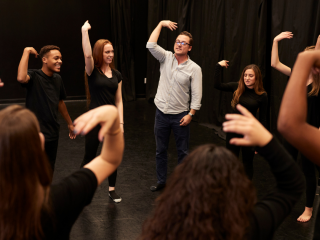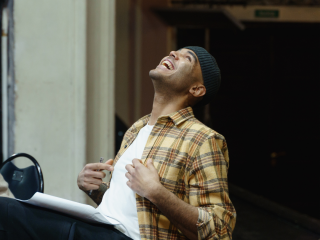Silence…often longed-for and often elusive. In theatre, silence can be a powerful tool. When used purposefully and artfully, it can have just as big of an impact as spoken words. You may have heard the old advice for storytellers: “show, don’t tell”. Silence can show a lot.
Silence in various forms has a long history in theatre. In this blog, I’ll offer a quick run-down of the roots of silence and the different ways theatre artists use it.
The Silent Mime
We can trace silent theatre back to mime, a mode of performance that uses only facial expressions and gestures to communicate a story. If you’ve ever played charades, you’ve done a bit of mime. The art of mime as we know it today started in 1816, when French actor Jean Gaspard Deburau began performing silent mime acts as Pierrot, a lovesick clown. Using only facial expressions and grand, specific gestures to tell a story, Deburau charmed his audiences. More recently, French actor Marcel Marceau became internationally famous for his silent mime performances as Bip the Clown. Marceau called mime “the art of silence” and created exercises like “Walking Against the Wind” and “The Cage”. His work, and that of actors like Jacques Lecoq, still influences physical theatre training worldwide.

Mime is a great training ground for actors. When you have only your body to tell a story, you have to find specificity in every movement and gesture you make. Mime and similar mask work train actors to be aware of their physicality and minimize unnecessary, unintentional, or vague movements. Check out this video for a primer on mime.
For more information on physical theatre and the art of clowning, check out our blog post here!
The Pinter Pause
Harold Pinter and silence practically go hand in hand. The British playwright is famous for his use of silence, so much so that his work gave us the term “Pinter pause”. But for Pinter, a silent moment did not mean that nothing was happening. In a pause, characters are still communicating and thinking, but without using words. Pinter described his pauses as a bridge: the audience is on one side of the bridge at the beginning of the pause and on the other side at the end. He also made a clear distinction between a pause and a silence. A Pinter silence is a cessation of communication and action, generally used when a situation has reached such absurdity that the character has nothing to say. In both a pause and a silence, something has changed on the other side.
Pinter summed up his concept of silence:
“I think that we communicate only too well, in our silence, in what is unsaid, and that what takes place is a continual evasion, desperate rearguard attempts to keep ourselves to ourselves. Communication is too alarming. To enter into someone else’s life is too frightening. To disclose to others the poverty within us is too fearsome a possibility.”
Harold Pinter
Pinter’s use of language and silence influenced writers like David Mamet, who advocates the idea that actors should embrace silence and use it to communicate more effectively than words can. Absurdist playwright Samuel Beckett used a form of silence in Krapp’s Last Tape, about a man who listens to tape recordings of his younger self. There is only one character seen on stage and most of the spoken words come from the tape recording, leaving the actor to rely on silent body language and facial expressions to communicate.
Subtext and the Art of the Unsaid
One of the most important tools in a storyteller’s arsenal is subtext. Put simply, subtext is what the character really means when they don’t say it explicitly. If a character’s child shows up at three in the morning and the character says, “Do you know what time it is?”, they’re not really asking for the time. The subtext is “Where on earth have you been?”
Sometimes, silence itself can be a type of subtext. If I ask Dan if he took the last cookie and he hangs his head in shame without answering, that silence is probably a subtextual “yes”. Moments like this can invite all kinds of questions that add dimension to the characters and the story: why doesn’t the character say what they mean? What kind of tension is created by the subtext?
When done with purpose, silence is a powerful storytelling device that can accomplish a lot with very little. Afterall, good storytelling is as much about what’s said as what’s not said. Do you have a favorite silent theatrical moment?














